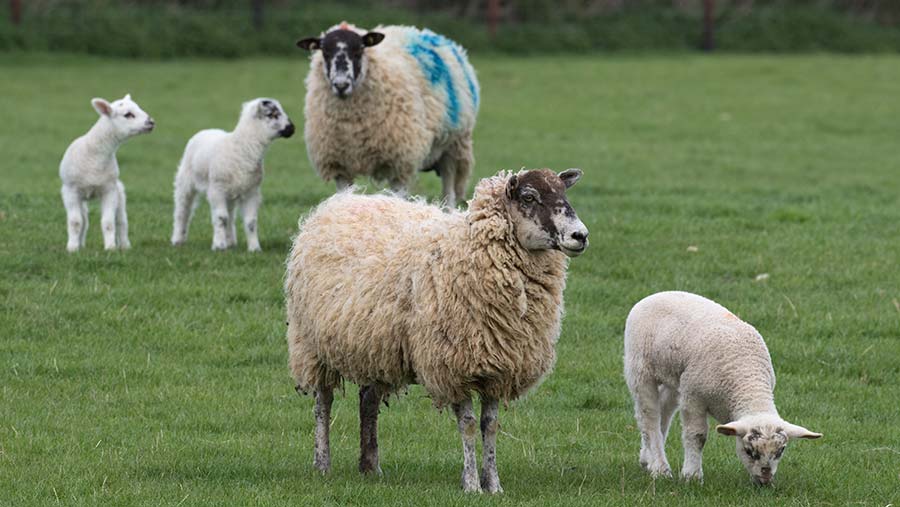Nematodirus risk increases as temperatures rise
 © Tim Scrivener
© Tim Scrivener Sheep producers are being warned to be on their guard against nematodirus disease following the sudden spike in temperatures.
The Sustainable Control of Parasites in Sheep (Scops) nematodirus forecast map shows nearly the whole of the UK is now at moderate risk – which means eggs are within 10 days of hatching.
Meanwhile, parts of the South, South West, north Wales and the Midlands are now at high risk from the disease.
See also: Sheep farmers urged to look out for blowfly strike as temperatures rise
What is nematodirus?
Nematodirus is a parasitic roundworm that affects young lambs grazing pasture. It causes profuse watery diarrhoea that causes dehydration and loss of condition and can lead to death.
Lesley Stubbings of Scops said: “Scops is urging farmers to remain vigilant, as the level of risk for nematodirus is now very high in some areas of the country. While many producers are still getting over the effect of the cold and wet weather, the bouts of warmer conditions, however welcome, mean no one can afford to rest on their laurels.”
She said lambs at the highest risk are those that were born in February and March and are now grazing fields that carried lambs last spring.
About the map
To assess the challenge on their farms, farmers are being advised to use the Scops nematodirus forecast – a free and easy-to-use interactive map.
It is updated daily using data from 140 weather stations provided by the Met Office and DarkSky, and tracks changes in risk throughout the spring and early summer.
This map allows farmers and advisers to select their nearest or most representative weather station and then access advice on how to relate the predicted risk to a particular farm.
Treatment options and possible management actions are also provided, which sheep farmers should use in consultation with their vet or adviser to consider the local risk and when/if to treat lambs.
Carry out FECs
Ms Stubbings added: “The warm weather last week has also led to the other worm species ‘waking up’, with reports of relatively high counts in some lambs.”
She said this shows farmers should now start to do faecal eggs counts (FECs).
Select the right product
Appropriate product choice will also be essential to protect young lambs, she added.
“While white wormers remain the product of choice to kill nematodirus worms, farmers may need to swap away from these drenches if other worm types need addressing on their farm.
“This is because resistance to white wormers is widespread in many species of worm other than nematodirus.”
Ms Stubbings advised farmers to speak to their vet or adviser for advice on product choices.
“With such a challenging season to date, we are urging sheep farmers to check their nearest weather station on the website and assess the risk to their lambs.”
Risk factors
- South-facing fields tend to have an earlier hatch.
- As a guide, every 100m increase in altitude will delay hatching by about seven days.
- So, for example, if the nearest weather station on the interactive map is at 200m above sea level and the farm is 100m above sea level, hatching could be about seven days earlier than our forecast.
- As soon as a local weather station displays an amber warning, farmers should follow the instructions provided to decide what this means for their particular farm and prepare to take action.
- Lambs are at risk from six to 12 weeks of age.This is made worse this year as ewes have struggled with weather conditions and lambs have been forced to eat more grass to supplement limited milk supplies.
